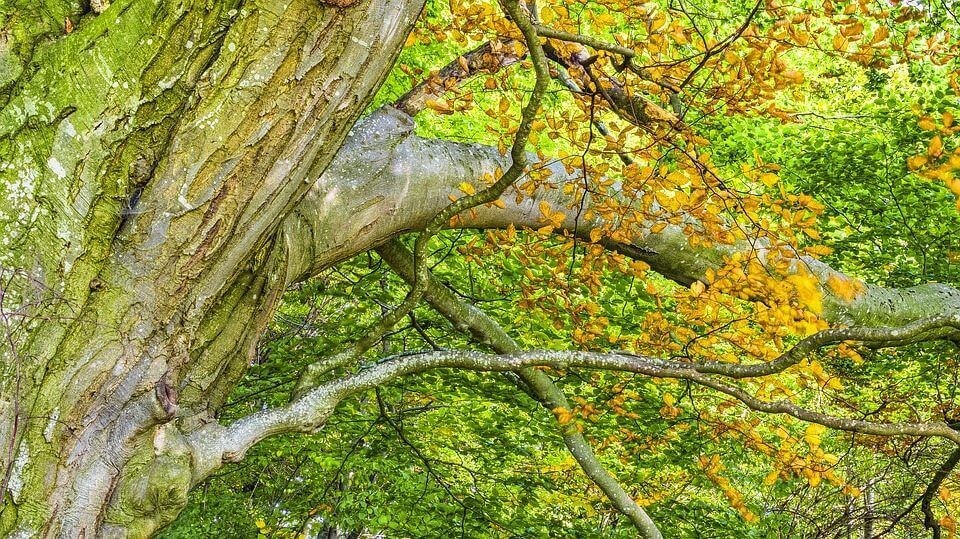Species Profile: Beech
June 15, 2017
Species Profile: Beech
The Beech tree, a type of deciduous tree with the genus Fagaceae, flourishes in Europe, Asia, and North America. We break it into two subgenera: Engleriana, which is found exclusively in East Asia, and Fagus, which encompasses the rest. In North America, the “American Beech” or Fagus grandifolia grows in central and southeastern states (as far down as east Texas), as well as states bordering the Great Lakes. Distinctive characteristics include low-hanging branches with yellow-green leaves in spring and small, triangular “beechnuts” in winter.
Appearance
The beech tree has a distinctive, silvery bark, and tends to grow very tall, up to 80 feet. Inside, its wood is dense and robust, with evenly textured stock and a straight grain. The light color of the sapwood echoes that of the yellow birch, although beech is more reddish in the heartwood. Growth rings develop surrounded by slightly darker latewood. Beech wood’s distinctive rays branch out short, yet unusually broad.
Its natural light color easily can be changed. Beech’s fine grain helps it to take well to varnish and staining (except for the heartwood).
Uses
Beech wood’s versatility demonstrated itself early– in ancient Germanic cultures, they utilized beech to make primitive tablets before paper was invented. The German word for book, “Buch,” comes from their word for beech, “Buche.”
Though beech wood doesn’t take well to drying, it excels in turning and bending. Beech resists breaks and compression and sticks well with glue. It also bends exceptionally well with steam, and so it functions frequently as chair backs and legs. With beech wood, woodworkers create materials as wide-ranging as delicate goblets since it bends and wooden spoons since it holds up to wear and tear. People also use harvested beech wood for flooring, containers, and railroad tracks.
Compared to other lighter-colored wood such as pine, beech withstands more abuse without denting or scratching; in fact, beech wood may grow smoother the more it is used. It also has only a very mild wood smell. However, beech wood is susceptible to moisture and particularly rot. Because of this, it endures best in a dry environment.
Cost and Availability
Until the invention of the modern chainsaw, beech trees were not harvested in mass quantities because of their density. For this reason, some unusually large groves of old beech trees remain. Now, they are regularly cut down but still quite plentiful.
Those looking for a hard, high-density wood should consider beech wood as a top option. The NHLA has graded the underappreciated beech “standard,” and it costs much less than other woods of comparable hardness. Demand for it in recent years has not increased, yet supply continues to be readily available. Many people utilize beech wood as a cheaper option to hard maple or oak.






